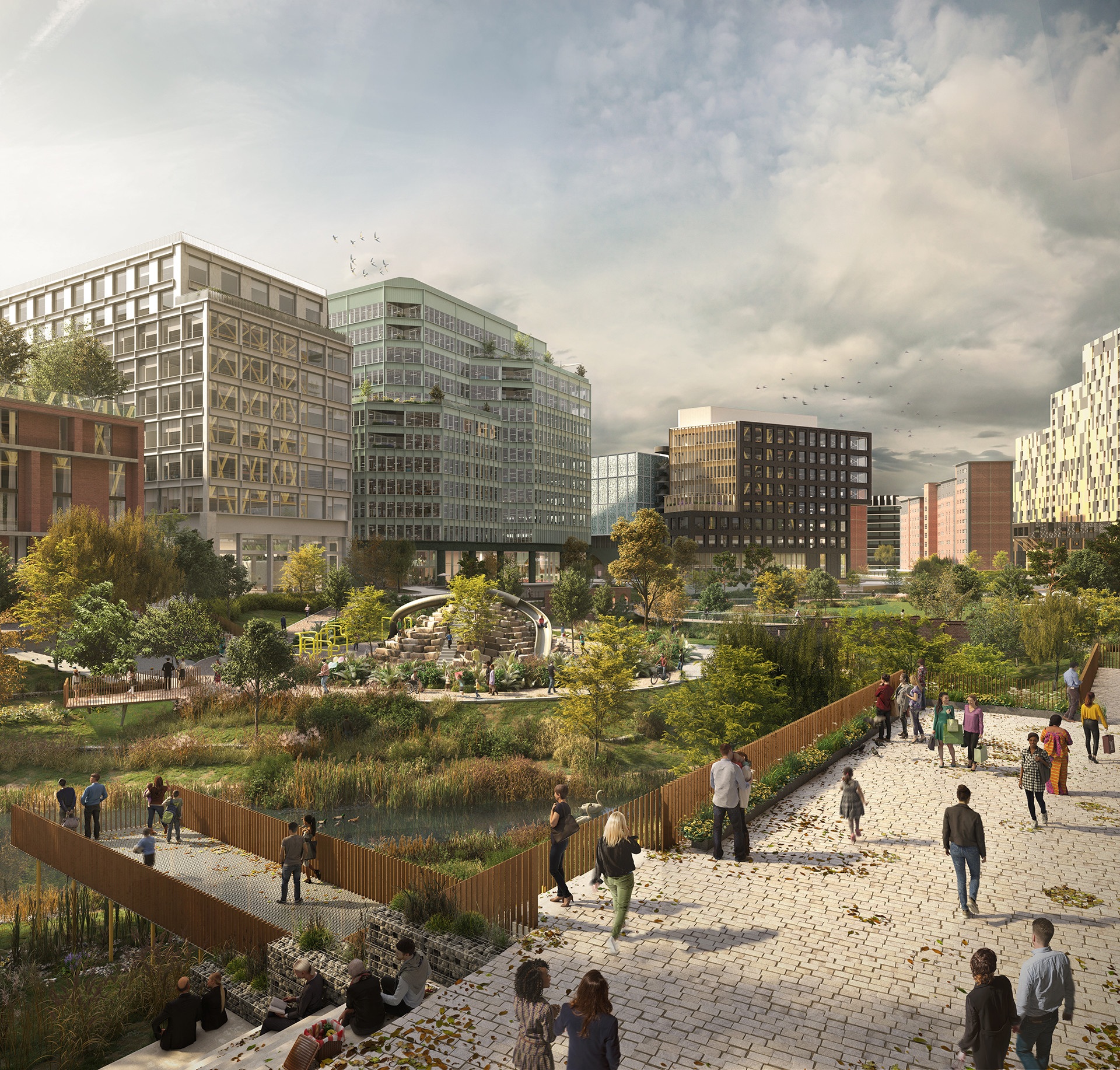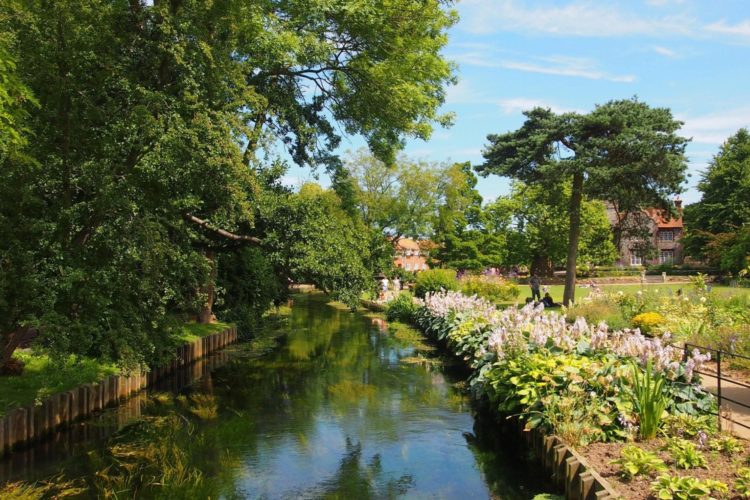As a tool resulting from the Government’s 25 Year Environment Plan, Natural England have launched the Green Infrastructure Framework, which is a guide reflecting on the scale of expertise and best practice across the sector. The Green Infrastructure Framework (including the requirement for Biodiversity Net Gain) is vital for improving the quality of life for urban communities and creating climate resilient towns and cities across England.
This is regarded as a powerful to assist in the deliverance of The Nature Recovery Network by tailoring planning and investment towards nature in our urban spaces. The guidance presented will allow planners, developers and communities to collaborate in understanding the existing quality and quantity of greenspaces and how these can be enhanced to increase benefits for health, wellbeing and the climate.
Why is green infrastructure important?
Green Infrastructure places people and nature together in harmony at the core of both towns and cities. These areas are critically important to support the wellbeing of current and future residents, however, it is increasingly argued the ‘prioritisation’ of development has removed these naturally valuable spaces. This is unfortunately the case that has revealed itself more over the last 50 years. During the pandemic, there was a significant demand for such spaces for escapism and sanctuary for many people across the globe. Nevertheless, since the lifting of lockdown and the gradual post-pandemic recovery, there has been a spotlight on the true importance of time spent outdoors with nature for both our health and wellbeing.
However, the green spaces that remain are not evenly distributed across the country, therefore emphasising inequalities in access to nature. The Fields in Trust charity conducted a study in May 2022 which revealed that an estimate of 1 in 24 people (approximately 2.8 million) in the United Kingdom live more than 10 minutes’ walk from the nearest public park, garden or playing field. Fields in Trust, which protects and campaigns for public green spaces, found just four out of the 11 regions in Great Britain met its “six-acre standard” for green space provision. The charity’s guidance for outdoor sport and play, first published in the 1930s, recommends a minimum of 6 acres (2.4 hectares) of accessible green space – such as parks, public gardens, nature reserves and playing fields – per 1,000 people. The cross-referencing of such findings with those areas prioritised for the government’s levelling up agenda revealed they had on average 10% less green space than the standard.
Public benefit of parks and green spaces is valued at £28.7 billion p.a., any loss of these spaces comes at a huge cost. Therefore, greater initiative needs to be paid to protecting and enhancing such areas. In addition to the Green Infrastructure Framework, Natural England have developed the award-winning Green Infrastructure Mapping tool is also a useful addition in identifying areas of multiple deprivation and limited access to these spaces, therefore enhancing the opportunities of more targeted distribution of funding and sources. Ultimately, this would assist in address inequalities surrounding health, biodiversity, climate change and sustainable growth. Additionally, the Green Infrastructure Design Guide further supports the National Model Design Code to help create more positive and attractive places for people to live, socialise and work, delivering the importance of nature in proximity to everybody.
Mayfield Park, Manchester
A perfect example of the success of introducing green spaces and nature into urban spaces is Mayfield Park in Manchester City Centre. The new 6.5-acre area will be the city’s first public park, which offers a “liberating urban escape for all”. The exceptional design both respects and restores Mayfield’s assets to create a world-class urban neighbourhood which is rich in heritage, distinct in character, authentic in spirit and progressive by nature.

The parkland itself contains 142 trees, 120,000 shrubs and plants, a kids’ play zone and benches which are all woven around the daylighted River Medlock. Different landscaped spaces each have their own character and amenities. The lawn space is also planned to be used for events, children’s play yard, a quiet contemplation zone, a wildscape for biodiversity, and multiple routes of walkways.
Since its opening in September 2022, Mayfield Park is becoming a true destination for local people – not only somewhere that they can visit for a picnic or walk but come together as a community for a whole range of activities and events. Mayfield Park is a green lung for Manchester, as the city’s first new park in over 100 years. A diverse mix of plant and tree species have been incorporated into the landscape design, with over 300 trees planted across the neighbourhood to facilitate carbon capture. Additionally, the planting of wildflowers and wetlands is also a positive asset in encouraging biodiversity, showing the benefits of green and blue infrastructure.
The River Medlock has been uncovered and rejuvenated, creating a new habitat for wildlife in the city centre. The park contains various new measures to support biodiversity, including kingfisher posts, bat bricks, and bird boxes. Many species are already returning to Mayfield, including fish and birds.
Whenever possible, existing materials and structures have been reused and recycled across Mayfield, emphasising the sustainability of the scheme. The site has a unique industrial heritage that has been celebrated and revived to form a place for the sustainable future. The cavernous Depot building, railway arches and three bridges have been retained, and historic details such as the Mayfield Baths tiles preserved and saved for use elsewhere on site. Materials have also been sourced locally to minimise the environmental impact of the development and construction process. Overall, this is a brilliant example of how city environments can respect heritage and regenerate areas to strengthen the accessibility to green spaces to support the population’s health and wellbeing for now and into the future.
Reflecting back on the Green Infrastructure Framework, this guide will have a truly outstanding impact on how we as planners approach promoting and supporting schemes to be truly sustainable, accessible and valued by all who use it. It was very insightful attending the live launch of the framework, and I am thankful for the opportunity to listen to Natural England and partners at the launch.
In everything that we do, we seek to protect and conserve the natural environment and finite resources of the planet and reflect this in the way we advise our clients, design schemes and select our partners.
We offer a comprehensive range of ecology and landscape services to both public and private sector clients to enable them to design developments and other schemes that are sensitive to the needs of wildlife, landscape and habitats. You can check out our portfolio of work here and contact us here for more information.
Top image Copyright © Blackwood Bayne – www.blackwoodbayne.co.uk

